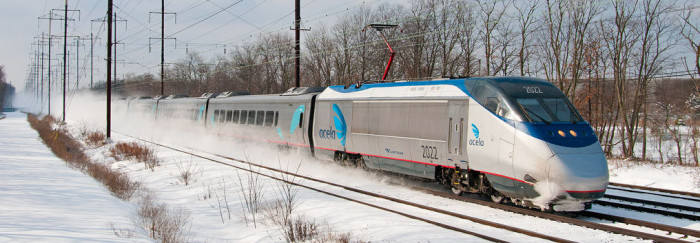Amtrak Facts, Figures and Trivia.
An average of 86,000-plus people a day take one of more than 300 Amtrak trains. Total ridership is now more than 31.5 million passengers a year.
Amtrak trains stop at more than 500 stations in 46 states, Washington, DC, and three Canadian provinces.
Amtrak is now covering almost 90 percent of its operating costs from ticket sales and other income. (One Amtrak executive I know says this makes Amtrak “the most profitable money-losing national passenger train system in the world.”)

Every day, more than 2,200 trains operate over some portion of the Boston-to-Washington corridor. That includes both Amtrak and commuter trains.
Between New York and Washington, Amtrak carries three times as many passengers as all the airlines combined.
Amtrak’s network of routes totals more than 21,000 miles, with 72 percent of those miles over track owned by the private railroads.
Amtrak operates 15 long-distance trains; the longest route is 2,728 miles (the Texas Eagle), from Chicago to Los Angeles by way of San Antonio.
Amtrak owns 23 tunnels with a total length of more than 18 miles, and 1200 bridges with a combined length of 42.5 miles.
Amtrak pays the freight railroads a fee for using their tracks and an additional incentive for running Amtrak trains on time.
Trains with even numbers travel north and east; odd numbered trains travel south and west. Just to confuse us, it’s just the opposite for Pacific Surfliner trains (Santa Barbara-Los Angeles-San Diego).
The Auto Train, operating between Lorton, Virginia, and Sanford, Florida, is the longest passenger train in the world with 40 cars, some for passengers and some for automobiles. Furthermore, it makes no stops and averages 50 mph throughout the 855-mile trip.
(And, yes, much of this information was gleaned from Amtrak’s web site, including their National Fact Sheet for 2013 and official timetables.)


